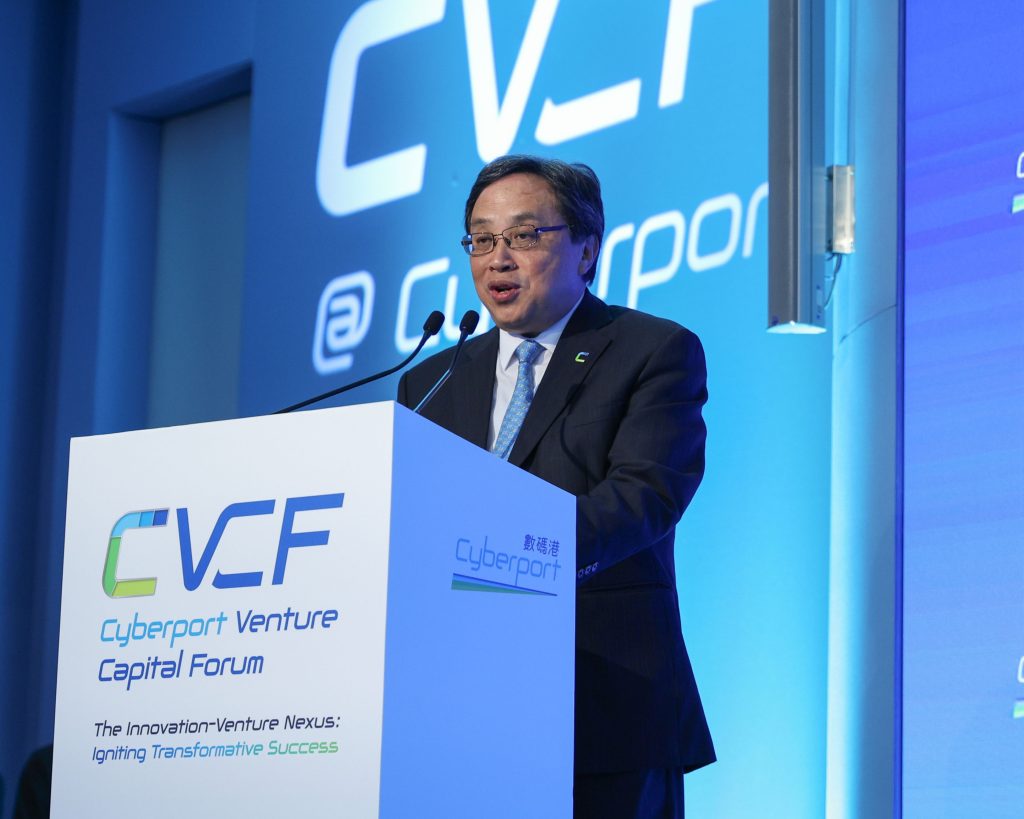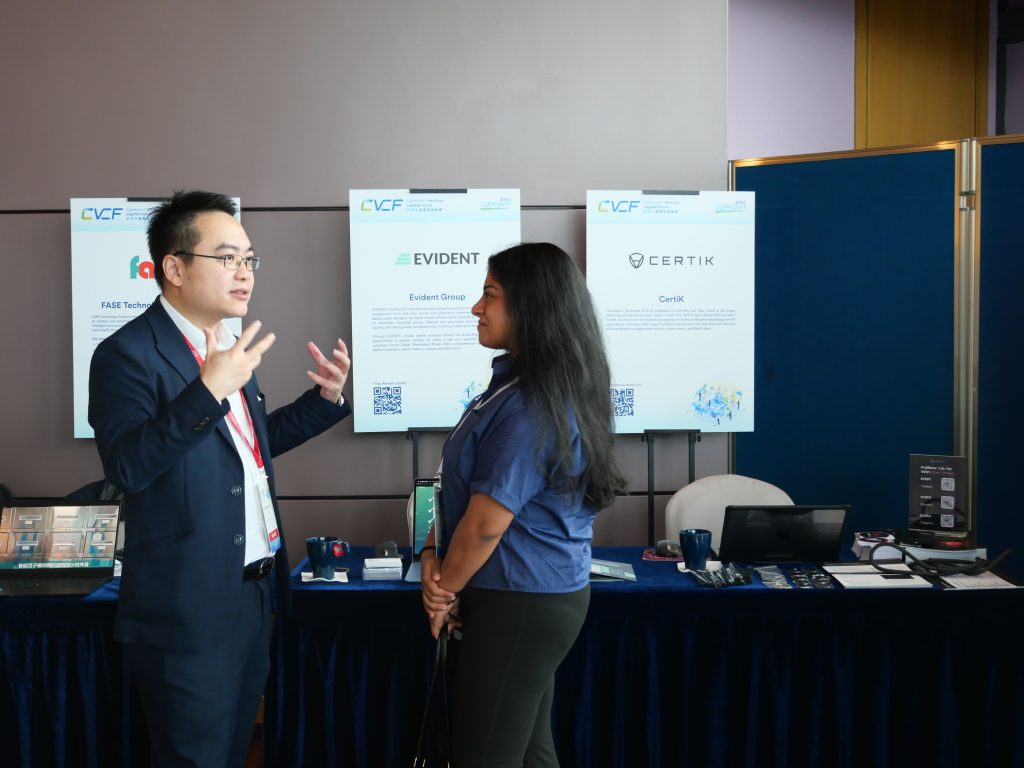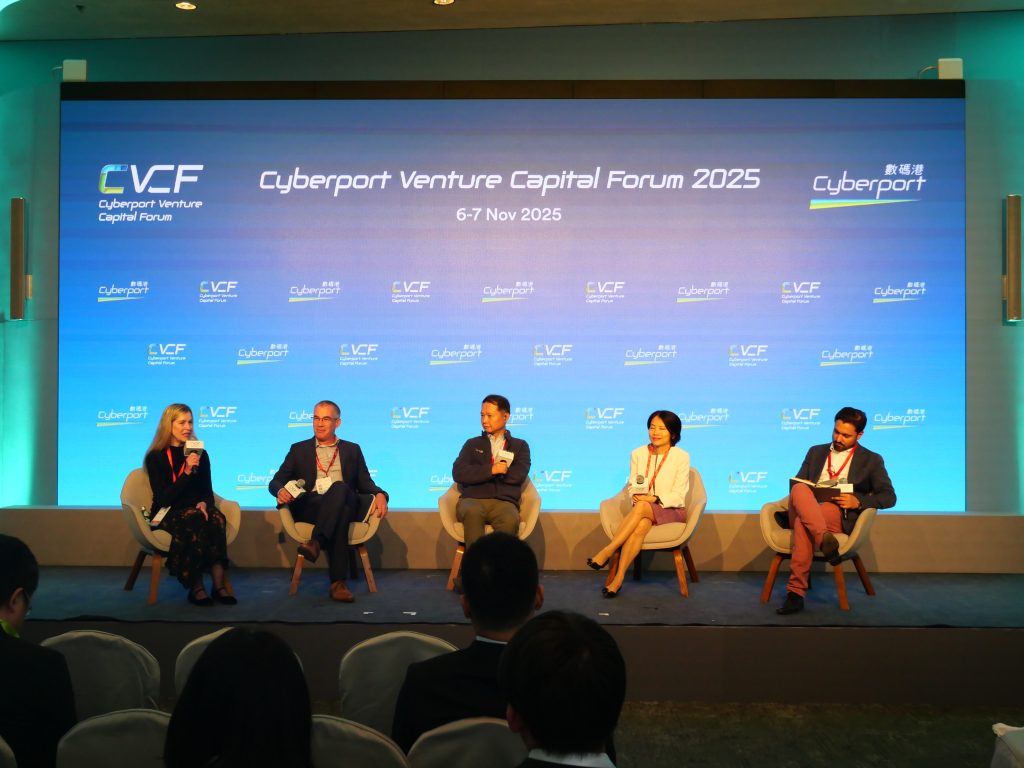Stepping into the auditorium of the Cyberport Venture Capital Forum (CVCF) 2025 felt like walking into a city in the midst of transformation. Hong Kong, long known as a financial powerhouse, made it clear through discussions on artificial intelligence, Web3, and venture capital that it is positioning itself to become Asia’s Silicon Valley, and not by chance, but by design.
The two-day forum, themed “The Innovation–Venture Nexus: Igniting Transformative Success,” gathered nearly 100 global venture capital experts, entrepreneurs, and policymakers to explore how artificial intelligence, blockchain, and digital assets are reshaping the investment landscape. Beneath the panels and presentations, what stood out was how deliberate Hong Kong’s innovation story and playbook have become.
The architecture of an innovation hub and engineered confidence
Under Secretary for Financial Services and the Treasury Joseph Chan laid out Hong Kong’s ambition with clarity. “The HKSAR Government issued the Policy Statement 2.0 on the Development of Digital Assets in Hong Kong in June this year to reinforce its commitment to establishing Hong Kong as a global hub for innovation in the digital asset field.”
That commitment is best reflected in the Blockchain & Digital Asset Pilot Subsidy Scheme, one of Cyberport’s newest initiatives. The program aims to close the trust gap between startups and investors by connecting innovators directly with industry partners under a regulated framework. Chan described it as a way to “foster a trusted ecosystem” where projects can undergo real-world testing and validation with government coordination.
Hearing this made me realize how structural Hong Kong’s innovation philosophy really is. It is not just about funding ideas but about engineering trust.
Cyberport CEO Dr. Rocky Cheng shared how the program had received over 200 applications, with nine projects approved covering areas such as tokenized assets, decentralized identity, and next-generation payments. “These pilot projects address market pain points with innovative solutions, setting benchmarks for future blockchain innovations,” he said. These are not speculative ventures. They are carefully chosen pilots who turn blockchain’s abstract promise into concrete economic value. A model that makes innovation feel less risky and more real.
The numbers behind a masterclass in hub-building

Every part of CVCF 2025 reflected precision. Cyberport Chairman Simon Chan noted that despite global headwinds, Cyberport startups raised HK$3.4 billion this year, bringing total fundraising to HK$46 billion.
“As Hong Kong’s digital tech hub, AI accelerator, and key incubator, Cyberport continues to strengthen homegrown entrepreneurs by enhancing their dealmaking capabilities,” he said. “Through our key investment instruments, such as the Cyberport Investors Network and the Cyberport Macro Fund, we have driven pivotal capital from global investors to springboard high-potential start-ups to success.”
Celebrating its eighth anniversary, the Cyberport Investors Network (CIN) achieved threefold year-on-year growth, with cumulative funding surpassing HK$4.258 billion. CIN Steering Group Chairman Hendrick Sin credited this to the network’s expanding reach of over 220 investment entities worldwide.
From these numbers alone, it was clear that Hong Kong is not waiting for innovation to happen. It is constructing the pathways that allow it to thrive.
From speculation to substance, not just hype

What also stood out to me was how Hong Kong is steering the conversation on digital assets away from hype and toward practical application.
At the Web3.0 Innovation Expo, part of the second day of the forum, I saw projects that felt tangible and far removed from the usual technical jargon and startup buzzwords. Startups that presented blockchain ticketing systems, tokenized real estate platforms, and new digital payment frameworks. These are not experiments in speculation, but tests in utility.
Dr. Cheng called this “building trust, not just markets,” a phrase that captures Hong Kong’s entire innovation playbook. By aligning public policy, private investment, and regulation, the city is proving that progress can be ambitious and purposeful without being reckless.
Today, Cyberport hosts over 300 blockchain, digital asset, and Web3.0 companies from nearly 20 countries, including three unicorns and three licensed virtual asset trading platforms. It is not only a community of startups but also an ecosystem of credibility.
Lessons for the Philippines
Covering CVCF 2025 made me reflect on what it would take for the Philippines to follow a similar path. Perhaps not to become Asia’s Silicon Valley, but to build a homegrown technical hub that the country can rely on to drive efficiency and innovation. Our startup ecosystem has creativity and ambition, but what it often lacks is an infrastructure of trust.
Hong Kong shows that private investment follows public conviction. Instead of waiting for a fully formed ecosystem to appear, its government took the first step: building a framework that de-risks innovation for everyone involved. By combining funding, policy, and validation in one coordinated system, they made confidence the starting point of progress.
For Manila, that may be the most important lesson. Innovation cannot thrive in uncertainty. It requires structure, and structure begins with trust and practical application.


